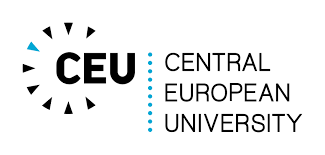- Home
- Case Studies
- Airborne LIDAR Technology for Sustainable Watershed Management: Red River Basin
Airborne LIDAR Technology for Sustainable Watershed Management: Red River Basin
Author(s)
Organization(s)
Map
Attachments
Technology Description
LIDAR is made up of the words ‘light’ and ‘radar’ and is defined by some organizations as light detection and ranging. The Oxford dictionary defines it as "a system for detecting the presence of objects or ascertaining their position or motion which works on the principle of radar, but uses laser radiation instead of microwaves (Oxford University Press 2014)." LIDAR technology was developed in the 1960s shortly after the development of the laser. It was first used for meteorology to measure clouds and was used to map the surface of the moon in 1971. Today LIDAR technology has evolved tremendously and has numerous applications to precisely measure a wide range of objects.
LIDAR technology works similarly to radar but uses light wave emitting and detection instead of radio wave emitting and detection. It now uses the vast range of wavelengths within the light spectrum, ranging from 250 nanometers (nm) to 10 micrometers (μm), to detect a number of physical features (Wikipedia 2014a). The light reflected back via backscattering is captured to provide information on objects measured. For instance, different types and combinations of wavelengths and their changes in the intensity of the signal can be used for detecting a range of atmospheric elements.
LIDAR technology can be generally categorized as coherent and incoherent detection approaches as well as micropulse and high energy systems. Coherent detection systems use optical heterodyne detection (more info below) which are more sensitive require less power but more complex transceivers while incoherent detection use amplitude measurements. Micro pulse systems use less energy and are often used for reconstituting 3D objects while high energy systems are typically used for atmospheric research.
The primary components of a LIDAR system consist of: 1) laser, 2) scanner and optics, 3) photo-detector and receiver electronics, and 4) position and navigation systems (Wikipedia 2014a). The lasers typically used range from 600 to 1000 nm (which are safe for the eyes) and are chosen as a function of the application. Airborne topography applications uses 1064 nm while Bathymetry measurements requires 532 nm to overcome water attenuation (Wikipedia 2014a). The laser setting consists of repetition rates which determines the data collection speed and pulse length (governed by cavity length, number of passes and Q-switch speed) which determines target resolution. The speed of image development is dependent on the type of scanner while optic choices can affect the resolution and range that can be detected. Photo-detectors used in LIDAR applications are either solid state or photomultipliers. The sensitivity of the receiver must also be adequately designed. Position and navigation systems are imperative when LIDAR technology is implemented using mobile platforms.
“Optical heterodyne detection is the implementation of heterodyne detection principle using a nonlinear optical process. In heterodyne detection, a signal of interest at some frequency is non-linearly mixed with a reference "local oscillator" (LO) that is set at a close-by frequency. The desired outcome is the difference frequency, which carries the information (amplitude, phase, and frequency modulation) of the original higher frequency signal, but is oscillating at a lower more easily processed carrier frequency (Wikipedia 2014b).”
Geographical Scope Description
The case study's selected focus is on airborne LIDAR measurement used in water management. The Red River Basin is an international basin shared by the United States and Canada is a flat landscape covering which supports extensive agricultural production. The basin is regularly affected by flooding impacts and a substantial area of the basin has been mapping using LIDAR technology to allow for the development of basin wide flood management strategies.
Problem Description / Relevance to Water Security
Airborne LIDAR measurements principally lead to the highly accurate 3D reconstruction of the landscape and its features. By mounting LIDAR measurement units on an aircraft large areas can be measured relatively quickly and cost effectively. Airborne LIDAR measurements can then be used to reconstruct a bare earth landscape as well as featured landscape which includes vegetation, buildings and other. These landscape reconstructions can then be used for a number of applications such as archeology, water and coastline management, farming, forestry, geology and conservation.
The accurate reconstruction of landscape topographies enables water managers to determine runoff direction and speed which can assist with mitigating potential flood related impacts. Furthermore, hydrological models using landscape topographies derived from LIDAR measurements, can be used to explore flood related scenarios to develop effective flood emergency measures. Furthermore, wet areas mapping enables to map out low areas on the landscape which are likely to be wet to build transportation corridors around them. Combining topographical and bathymetric LIDAR can provide a good understanding of overlap between land and sea interface as well as coastal erosion.
ICT Application / Outcome
Southern Manitoba has a long history of flooding events which has led to significant damages in the region over the years. The Red River Valley (RRV) is a disaster hot spot in the United States and a multi-million dollar floodway was built to protect the City of Winnipeg from floodwaters in Canada (see Figure 1). The spring melt of 2011 brought with it simultaneous flooding events in most of Southern Manitoba (Public Safety Canada 2013). The Assiniboine and Souris River Basins which typically do not have excess floodwaters were also gravely affected in 2011. Water quality also suffers across Southern Manitoba as excess nutrients primarily entrained during the spring snow melt have led to the eutrophication of many water bodies including Lake Winnipeg which has become the largest eutrophic large lake in the world (Lake Winnipeg Foundation, Undated).
A better understanding of the hydrodynamic behavior of Southern Manitoba is required to circumvent these problems. High resolution elevation data is fundamental to understanding the hydrology of a given landscape. Southern Manitoba’s flat and near-uniform topography requires elevation data of the greatest accuracy and precision to determine where and how fast the water will flow on the landscape. Following the 1997 flood in the RRV, which devastated Grand Forks and prompted emergency flood mitigation measures in Winnipeg, a number of efforts were made to collect high resolution elevation data for flood mitigation purposes. LIDAR was collected along the Canadian portion of the RRV in the early 2000s and additional areas were acquired subsequently. Recognizing the importance of adequate elevation data across the basin, the International Water Institute in North Dakota coordinated the collection of LIDAR data for the entire portion of RRB in the United States (International Water Institute, Undated).
The LIDAR data sets collected on both sides of the border have been invaluable as it has been used for a number of land use planning and watershed management applications. It is currently being used in the RRB primarily for flood prevention initiatives but also for water and nutrient management efforts.
The LIDAR data that has been collected within the RRB has been used to model the hydrology of the river’s main stem during spring runoff using the MIKE-11 modeling platform. The International Joint Commission recently used LIDAR and the Telemac-2D hydrodynamic model to simulate the 2006 flood on the Pembina River tracking where the water flows on the landscape (Bell, 2011). High resolution elevation data is being used to plan a number of flood mitigation infrastructure investments such as community ring dykes and water impoundments (Glazewski et al. 2011). The International Water Institute and the Minnesota Centre for Environmental Policy Advocacy are using LIDAR data to identify adequate water retention locations and wetland restoration initiatives.
LIDAR data is also being used for water quality and nutrient management projects. Agriculture and Agri-Food Canada and the LaSalle Redboine Conservation District have acquired LIDAR data to model nutrient flows from the LaSalle watershed using Soil and Water Assessment Tool modeling. This will provide insights for developing effective programs and practices that could improve water quality.
Despite its value, high resolution elevation data has not been collected for all of Southern Manitoba. High acquisition costs remain a significant obstacle to its collection. Consequently, comprehensive and accurate hydrodynamic modeling for Southern Manitoba without sweeping assumptions remains impossible.
Applicability / Transferability
LIDAR technology can be used to address mapping and modeling hydrology to address numerous watershed and water management issues including flood, drought and water quality issues.
Final Thoughts / Advantages & Disadvantages
Advantages:
- High resolution elevation data can be derived which is essential for modeling hydrology;
- Can be collected using via the air covering large swath of area;
- Can be used to collect data on all physical objects including mapping bathymetry (can measure surfaces below water).
Disadvantages:
- Can be data intensive requiring a lot of processing power;
- Can be quite expensive to collect since it requires specialized equipment and staff;
- Requires the right level of expertise to operate the equipment, collect and process the data.
References
Bell, G. (2011). Further Simulations of Pembina River Flooding. In Reflections on the Red (p. 31). Fargo, North Dakota: Red River Basin Commission.
Glazewski, K., Kurz, B., Peck, W., & Grove, M. (2011). A Methodology to Identify Potential Distributed Water Storage Sites Using LIDAR. In Reflections on the Red. Fargo, North Dakota: Red River Basin Commission.
International Water Institute. (Undated). Red River basin Decision Information Network. Red River basin Decision Information Network. Retrieved April 3, 2014, from http://www.rrbdin.org/archives/147
Lake Winnipeg Foundation. (Undated). Lake Winnipeg. Little Known Facts. Retrieved from http://www.lakewinnipegfoundation.org/lakewinnipeg/facts/
Michez, A., Piégay, H., Toromanoff, F., Brogna, D., Bonnet, S., Lejeune, P., & Claessens, H. (2013). LiDAR derived ecological integrity indicators for riparian zones: Application to the Houille river in Southern Belgium/Northern France. Ecological Indicators, 34, 627–640. doi:10.1016/j.ecolind.2013.06.024
Oxford University Press. (2014). lidar. Oxford Dictionaries - Language matters. Online Dictionary. Retrieved April 1, 2014, from http://www.oxforddictionaries.com/definition/english/lidar
Public Safety Canada. (2013). Canadian Disaster Database. Canadian Disaster Database. Retrieved April 3, 2014, from http://cdd.publicsafety.gc.ca/rslts-eng.aspx?cultureCode=en-Ca&boundingB...


